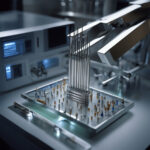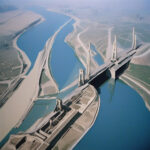Harvard Team Builds Sunlight-Powered Flyers to Explore Earth’s Upper Atmosphere
Researchers have demonstrated a lightweight disc-like device that can float in the mesosphere, a part of Earth’s atmosphere, using sunlight as its power source. This groundbreaking invention marks a significant advancement in atmospheric exploration and data collection.
The team from Harvard University, led by Professor David Keith, designed these innovative flyers to be propelled by the sun’s energy. The concept is based on the principle of utilizing solar radiation pressure to provide the necessary thrust for movement. By harnessing this natural phenomenon, the flyers can travel through the mesosphere with remarkable precision and efficiency.
One of the key advantages of these sunlight-powered flyers is their ability to remain airborne for an extended period. Traditional methods of atmospheric exploration, such as weather balloons, have limitations in terms of duration and control. In contrast, the Harvard team’s invention offers a sustainable and cost-effective solution for conducting long-term observations in Earth’s upper atmosphere.
Moreover, the disc-like design of the flyers allows for increased stability and maneuverability during flight. This feature is essential for navigating the dynamic and turbulent conditions found in the mesosphere. By leveraging aerodynamic principles and advanced materials, the Harvard team has optimized the performance of these autonomous flyers in challenging atmospheric environments.
In addition to their scientific capabilities, these sunlight-powered flyers have the potential to revolutionize our understanding of Earth’s upper atmosphere. By collecting data on temperature, pressure, and composition at different altitudes, researchers can gain valuable insights into atmospheric dynamics and climate patterns. This information is crucial for improving weather forecasting models and monitoring environmental changes over time.
Furthermore, the versatility of the flyers opens up new possibilities for interdisciplinary research collaborations. Scientists from various fields, including meteorology, physics, and engineering, can leverage this technology to explore different aspects of the mesosphere and conduct experiments that were previously unattainable.
As we look to the future, the development of sunlight-powered flyers represents a significant milestone in atmospheric science and exploration. By pushing the boundaries of technological innovation and harnessing the power of the sun, the Harvard team has paved the way for a new era of discovery in Earth’s upper atmosphere.
In conclusion, the creation of these innovative flyers underscores the importance of interdisciplinary collaboration and creative problem-solving in scientific research. With their potential to revolutionize atmospheric exploration, these sunlight-powered devices are poised to shape the future of environmental monitoring and climate studies.
#HarvardUniversity #AtmosphericExploration #SunlightPoweredFlyers #ScientificInnovation #ClimateResearch












